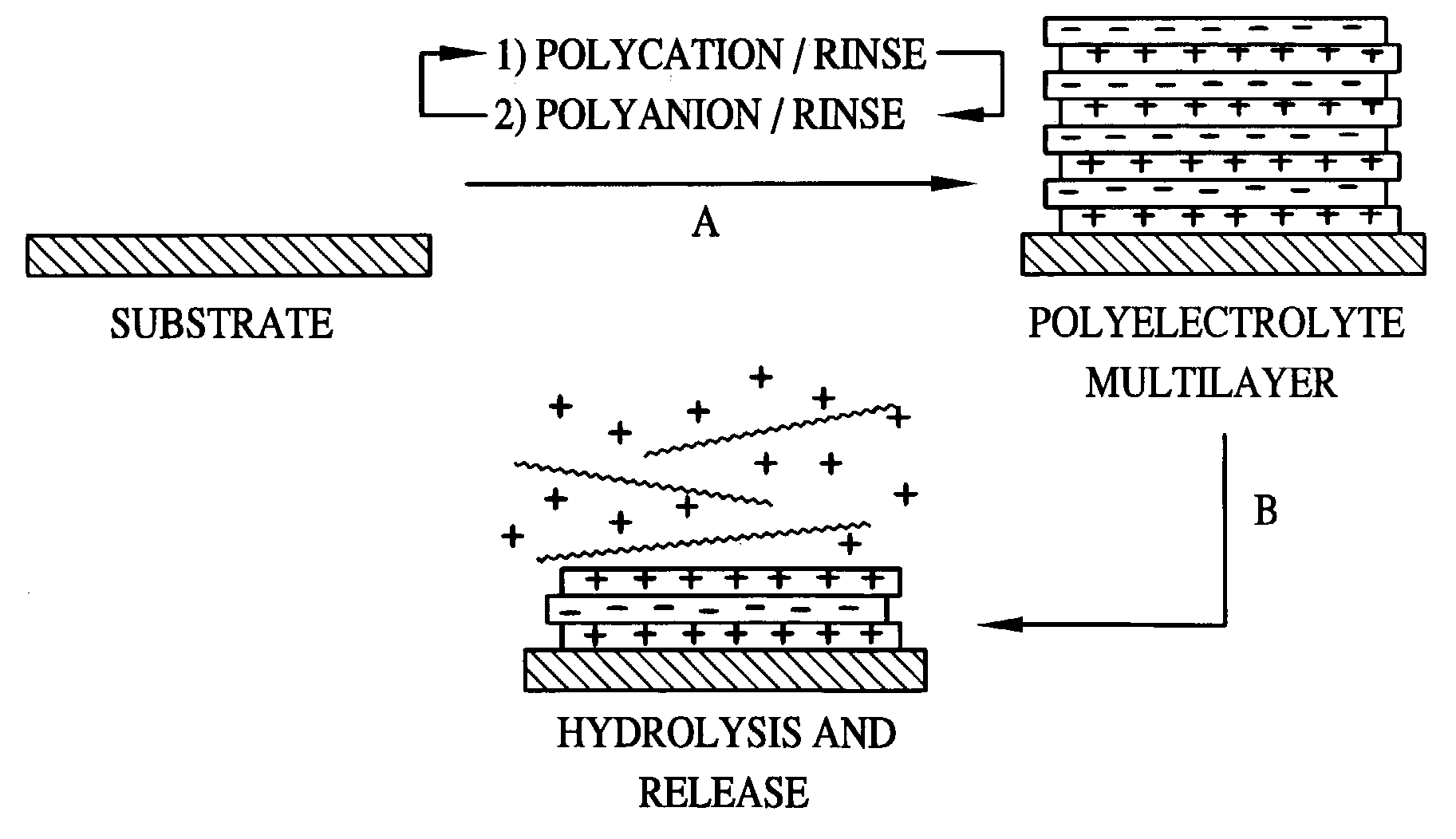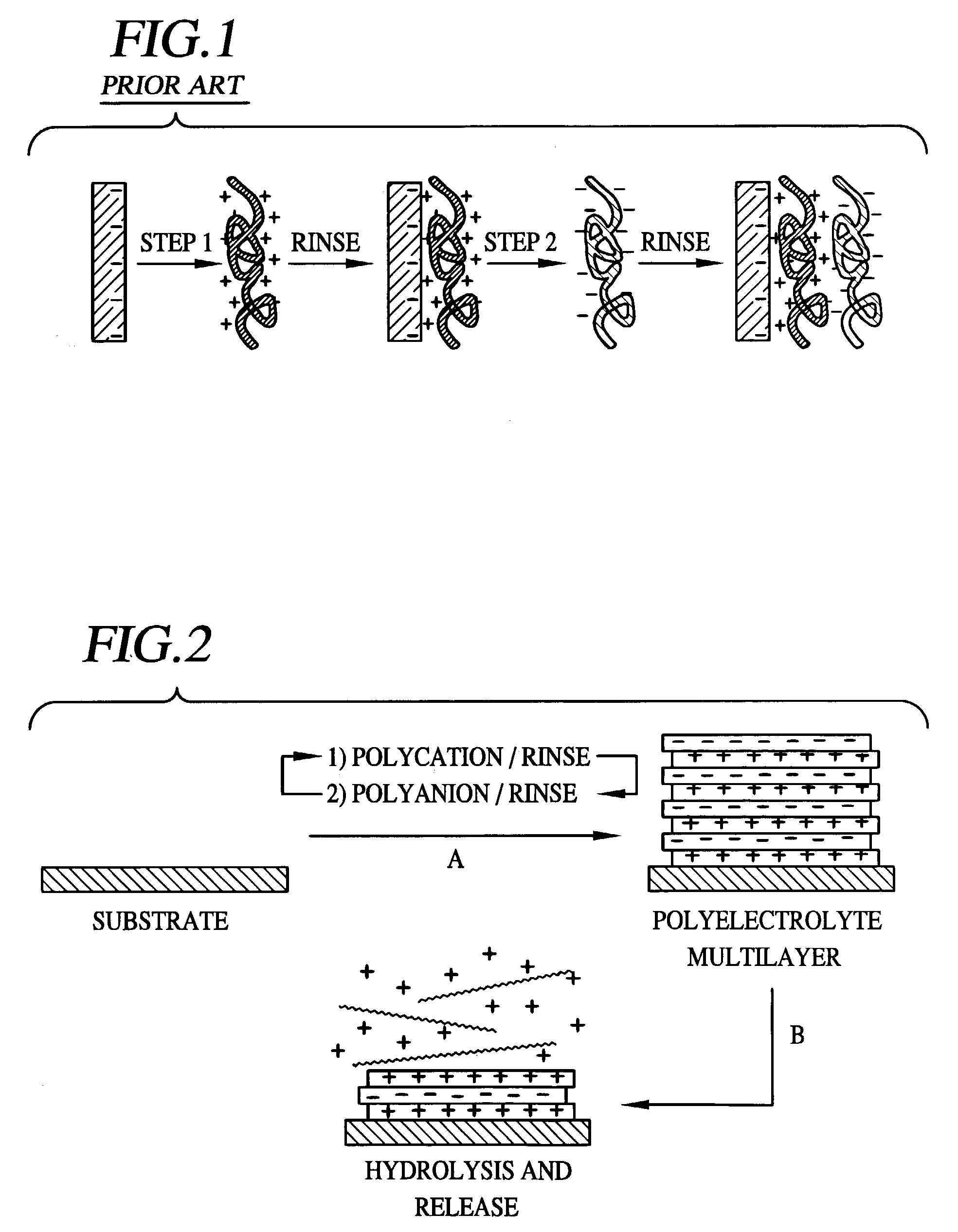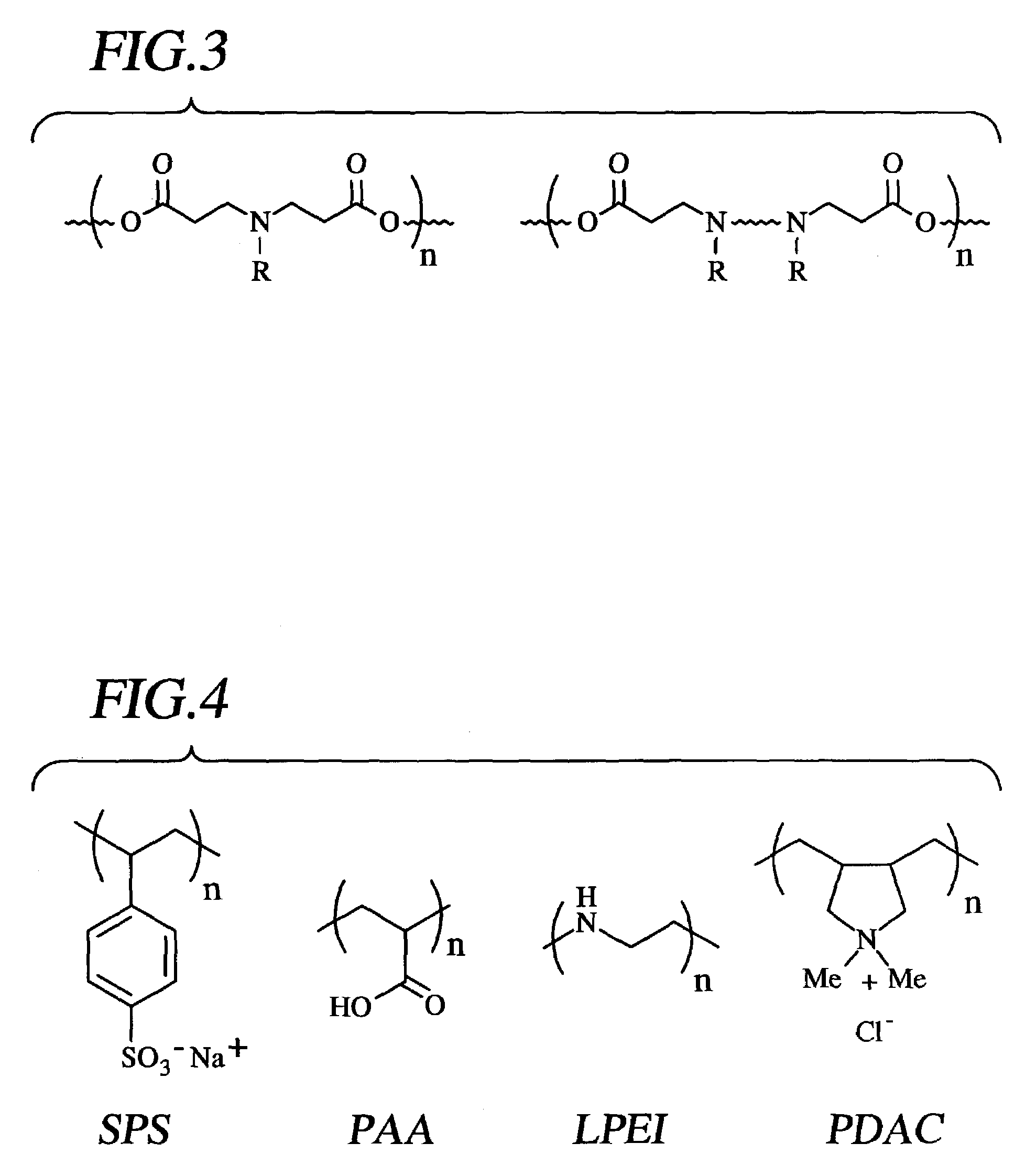Methods of making decomposable thin films of polyelectrolytes and uses thereof
- Summary
- Abstract
- Description
- Claims
- Application Information
AI Technical Summary
Benefits of technology
Problems solved by technology
Method used
Image
Examples
examples
Materials and Methods
[0072]Polymers: The poly(β-amino ester) “Poly 1” (FIG. 10) was selected for use in initial experiments based on the relatively slow degradation rate of this polymer at acidic pH (tt / 2>10 h at pH=5.1, 37° C.) (Lynn, D. M., et al., J. Am. Chem. Soc., 122:10761–10768, 2000). As Poly 1 has also been shown to form electrostatic complexes with polyanions such as DNA in solution, we hypothesized that it would readily absorb to negatively-charged surfaces and model polyanions such as poly(styrene sulfonate) (SPS) and poly(acrylic acid) (PAA) commonly used for LBL assembly.
[0073]Poly(sodium 4-styrenesulfonate), “SPS”, MW˜70,000 and highly polymerized calf thymus DNA were obtained from Sigma-Aldrich, St Louis, Mo. Linear poly(ethylene imine), “LPEI”, MW˜25,000, poly(dimethyldiallylammonium chloride) “PDAC”, MW˜240,000) and poly(acrylic acid), “PAA”, MW˜90,000 were obtained from Polysciences, Warrington, Pa. Poly 1 (see FIG. 10, MW˜10,000), was synthesized as described in ...
PUM
| Property | Measurement | Unit |
|---|---|---|
| molecular weights | aaaaa | aaaaa |
| ionic strength | aaaaa | aaaaa |
| pH | aaaaa | aaaaa |
Abstract
Description
Claims
Application Information
 Login to View More
Login to View More - R&D
- Intellectual Property
- Life Sciences
- Materials
- Tech Scout
- Unparalleled Data Quality
- Higher Quality Content
- 60% Fewer Hallucinations
Browse by: Latest US Patents, China's latest patents, Technical Efficacy Thesaurus, Application Domain, Technology Topic, Popular Technical Reports.
© 2025 PatSnap. All rights reserved.Legal|Privacy policy|Modern Slavery Act Transparency Statement|Sitemap|About US| Contact US: help@patsnap.com



